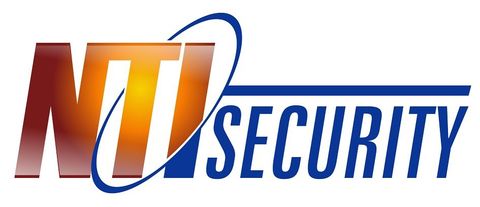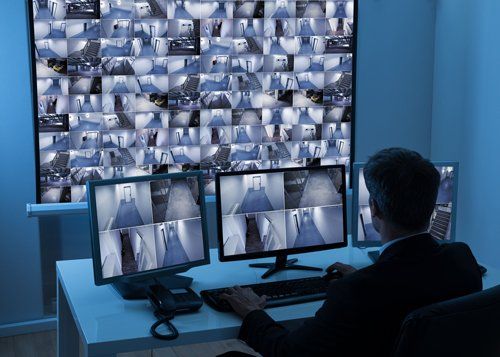Design Center
Industry Statistics
Prices are dropping...
Due to improved technology and the competitive marketplace, the average price of a security system has decreased in the last nine years, dropping from $1,509. in 1990 to $1,000. in 1999.
Source: Security Sales 2000 Fact Book, 1999 Security Sales Dealer Survey.
Security Systems Reduce Burglaries...
Homes without security systems are about 3 times more likely to be broken into than homes with security systems. (Actual statistic ranges from 2.2 times to 3.1 times, depending on the value of the home.) Businesses without alarm systems are 4.5 times more likely to be burglarized than commercial locations with electronic security in place. Losses due to burglary average $400. less in residences with security systems that for a residence without security systems.
Source: Simon Hakim, Temple University, (215) 204.7476
Where Burglars Enter a House...
One survey in Pennsylvania showed that 81 percent of residential intrusions occur though the first floor. 34 percent of burglars entered through the front door; 22 percent through the back door; 9 percent through the garage; 4 percent entered through an unlocked entrance; 2 percent through a storage area; and only 2 percent entered anywhere on the second floor. A study in Connecticut showed that 12 percent of burglaries occurred through an UNLOCKED door and that in 41 percent of alarmed homes that were burglarized, the security system was not turned on.
Source: Simon Hakim, Temple University, (215) 204.7476
Police Believe Security Systems Reduce Burglaries...
90 percent of police believe alarms deter burglary attempts.
Source: STAT Resources, Inc. Boston, Mass., (617) 734.2000
In 1994, the International Association of Chiefs of Police passed a Board Resolution stating that professionally installed and monitored alarm systems are useful instruments to deter crime and provide peace of mind for residential and business owners. The organization also pledged to work with the alarm industry to help reduce the problem of false alarms.
Source: International Assoc. of Chiefs of Police, Alexandria, VA., (703) 836.6767
People Feel Safe with Security Systems...
94 percent of alarm owners are satisfied with their alarm systems.
Source: Simon Hakim, Temple University, (215) 204.7476
Burglar Bars Can Kill...
From 1985 to 1991, an average of 16 people died each year due to burglar bars blocking their exits from burning homes or buildings.
Source: Learn Not To Burn Foundation, Quincy, Mass., (617) 770.3000
Recommendations for Proper Alarm Protection
The Following Recommendations for the location of Fire and Burglary Detection Devices Help Provide Proper Coverage for the Protected Premises.
Recommendations For Smoke And Heat Detectors
With regard to the number and placement of smoke/heat detectors, we subscriber to the recommendations contained in the National Fire Protection Association's (NFPA) Standard #72 noted below.
Early warning fire detection is best achieved by the installation of fire detection equipment in all rooms and areas of the household as follows: For minimum protection a smoke detector should be installed outside of each separate sleeping area, and on each additional floor of a multi-floor family living unit, including basements. The installation of smoke detectors in kitchens, attics (finished or unfinished), or in garages is not normally recommended.
For additional protection the NFPA recommends that you install heat or smoke detectors in the living room, dining room, bedroom(s), kitchen, hallway(s), attic, furnace room, utility and storage rooms, basements and attached garages.
In addition, we recommend the following:
- Install a smoke detector inside every bedroom where a smoker sleeps.
- Install a smoke detector inside every bedroom where someone sleeps with the door partly or completely closed. Smoke could be blocked by the closed door. Also, an alarm in the hallway outside may not wake up the sleeper if the door is closed.
- Install a smoke detector inside bedrooms where electrical appliances (such as portable heaters, air conditioners or humidifiers) are used.
- Install a smoke detector at both ends of a hallway if the hallway is more than 40 feet (12 meters) long.
- Install smoke detectors in any room where an alarm control is located, or in any room where alarm control connections to an AC source or phone lines are made. If detectors are not so located, a fire within the room could prevent the control from reporting a fire or an intrusion.
Recommendations For Proper Intrusion Protection
For proper intrusion coverage, sensors should be located at every possible point of entry to a home or commercial premises. This would include any skylights that may be present, and the upper windows in a multi-level building.
In addition, we recommend that radio backup be used in a security system so that alarm signals can still be sent to the alarm monitoring station in the event that the telephone lines are out of order (alarm signals are normally sent over the phone lines, if connected to an alarm monitoring station).
Central Station
NTI SECURITY Secure Internet Connection
Before clicking on the link below you must have your receiver number, account number and passcode.
Some of the Key Features:
- Proofread Account Information
- Place Account(s) On/Off Test
- Obtain Test Results
- Obtain Alarm History
- Request Account Changes
Phone:
610-353-9388 |
|
Address: 649 South Ave., Suite 3 Secane, PA 19018 | | Email: info@ntisecurity.com






Content, including images, displayed on this website is protected by copyright laws. Downloading, republication, retransmission or reproduction of content on this website is strictly prohibited. Terms of Use
| Privacy Policy

